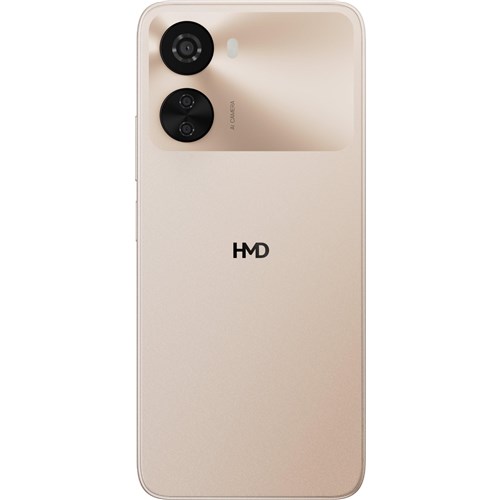
It seems HMD isn’t slowing down its phone launches. After the first Vibe showed up last year as a low-cost entry, its successor — the HMD Vibe 2 — is already listed at an Australian retailer, revealing all the important details ahead of launch.
The Vibe 2 keeps things simple. I it has a 6.75-inch HD+ LCD with a smooth 90 Hz refresh rate, though the waterdrop notch and thicker bezels remind us this is still a budget phone. Inside sits the Unisoc T606, paired with 4 GB RAM and 256 GB of storage, expandable via microSD. A side-mounted fingerprint reader, headphone jack, and Android 15 out of the box round up the basics.
The battery grows to 5,000 mAh, but charging remains at 10 W, so top-ups won’t be quick. Cameras get a mixed update: there’s a 50 MP main shooter, but it’s supported only by two tiny 0.08 MP “assist” sensors, while the selfie camera stays at 5 MP.
The device comes in Dark Grey and Light Titanium colours, with a listed retail price of AUD 288 (~USD 187) in Australia.
Other HMD phones also surface
Interestingly, the Vibe 2 wasn’t the only device spotted. The EU’s EPREL database now lists a few more unannounced models:
- HMD Fuse (TA-1640): 4,900 mAh battery, but with much faster 33 W charging and IP54 rating.
- HMD Pulse 2 (TA-1687) and Pulse 2 Pro (TA-1695): Both come with 4,900 mAh batteries, 20 W charging, and IP54 protection.
All three models earned an A energy class score, which ties directly into the new EU energy labeling rules that now apply to smartphones. HMD seems to be one of the first brands to openly market phones according to these updated regulations.
With IFA 2025 just around the corner, there’s a strong chance that the Vibe 2, Fuse, and Pulse 2 series will all be officially introduced at the Berlin tech show. That stage would give HMD the visibility it needs as it continues to build its own brand identity alongside Nokia.
The Vibe 2 looks like a cautious refresh with more storage and a better main camera, but a weaker chipset compared to the original Snapdragon-powered Vibe. Meanwhile, the Fuse and Pulse 2 series could be more interesting, especially with faster charging speeds and IP ratings.
What’s clear is that HMD is already adapting to EU sustainability and energy transparency requirements, which could become a bigger selling point in Europe. The bigger question is whether these phones can stand out in a crowded market, or whether they’ll mainly appeal to users looking for simple, reliable smartphones at a fair price.
Source GSMArena